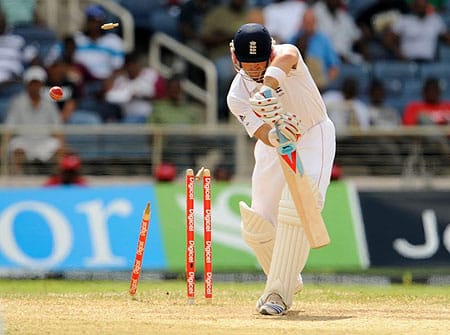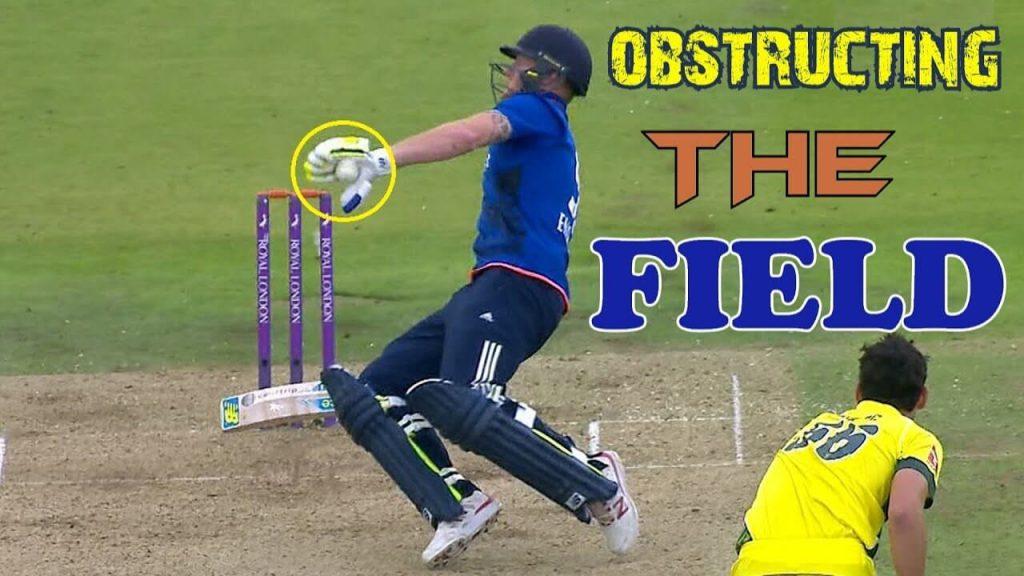

The game of cricket sees two sides facing each other with each team aiming to score more runs than the opposition. The team that bats is restricted by the bowling side whose aim is to restrict the scoring of the batting side by two means: bowling with an efficiency that does not allow the batsman to score runs and bowling to get the wickets of all players of the batting side as quickly as possible.
The bowling side can take the wickets of the batsman in multiple fashion. The Laws of Cricket kept on updating this section as the game progressed based on its materialistic and technological aspects. Let us have a look at all the modes in which a batsman can be called out.
BOWLED
This term is also referred as “clean bowled.” The batsman’s main objective is to score runs while simultaneously guarding the stumps behind him. However, if he fails to do so, a good delivery by the bowler can ruffle the stumps and send the batsman to the pavilion. It is important to note that the batsman can be out by this method only if the bails (at least one) has completely dislodged from the stumps.
LBW
This is a dismissal method when the batman’s legs are position right in front of the stumps. In case the bowl hits the pads in line with the stumps behind him, the batsman is said to be out leg before wicket (LBW). If the ball hits the bat first before hitting the pads, then the batsman is considered not out. There is much more to LBW than this. Please read more about it here.

CAUGHT OUT
When the bowler bowls, the remaining ten players of the side position themselves in different areas of the ground to stop the bowl from going to the boundary. It so happens during a match, that a shot hit by the batsman might go straight to one of the fielders directly without pitching even once on the ground. If te fielder manages to catch the ball, the batsman is considered out.
CAUGHT BEHIND
Similar rules apply for this mode of dismissal as seen above in the caught out category. However, in this case, the fielder is none other than the wicket-keeper.
CAUGHT & BOWLED
If the batsman hits the ball in the direction of the bowler there are chances that the bowler himself might take the catch. This is known as caught and bowled.
RUN OUT
One of the ways in which a batsman can score runs is by running between the wickets by landing their bat across the crease to complete one run. Many times, while running those runs, the two batsmen on the crease might have some misunderstanding. It may also happen that the batsman might fall short or be slower to land his bat across the crease. In both these scenarios if the player near the stumps receives the ball and dislodges the stumps (necessarily the bails) and if the batsman has failed to land his bat across the crease, he is considered run out.
STUMPED
This mode of dismissal is most often seen in spin bowling. The wicket-keeper positions himself extremely near the stumps when the spinner comes to bowl. The batsman might often move out of the crease and try to hit an aggressive shot. However, many times he gets deceived in the shot-making and misses the ball completely. If the wicket-keeper receives the ball and immediately dislodges the bails while the batsman is out of his crease, he is stumped out.
The above mentioned scenarios are the most common ways in which a batsman can be out. However, there a few other instances that have occurred over the years in which the batsman was sent back to the pavilion in unusual ways. Let us have a look at those.
HIT WICKET
On some occasions, a batsman can accidentally hit the bat or any other part of his body on the stumps which might result in the bails getting dislodged. This is called hit wicket and the batsman is declared out. This form of wicket is credited in the bowler’s account as well.

RETIRED HURT
This is not exactly a wicket that is earned. It happens when a batsman gets injured and is forced to end his batting since he finds himself unfit to bat further. No bowler can get a wicket count in his favour if a batsman gets retired hurt.
DOUBLE HIT
This is a phrase used when the batsman hits a shot but accidentally the balls hits the bat twice in the process. This type of wicket adds to them bowler’s credentials.
OBSTRUCTING THE FIELD
This is a rare form of dismissal where a batsman tries to break the flow or rhythm of the match by “handling the ball.” So far only seven batsman have fallen prey to this rule in ODI cricket.

TIMED OUT
When one batsman gets out, the next batsman in line has a time of three minutes in which he has to face the next ball. If this batsman takes more than three minutes or causes unreasonable delay beyond this time, he is declared out.
Thus, these are the various ways in which a bowling side can get the batsmen out in any format of cricket.




